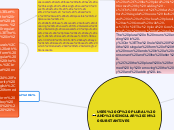av Jose corella för 7 årar sedan
631
Plural y Singular

av Jose corella för 7 årar sedan
631

Mer av detta
The plural of nouns that end in or Rule: For most singular nouns ending in or, the plural is formed by adding -s. However, there are singular nouns that end in or whose plurals are formed with -es. The plural form of a noun that ends in two vowels is always -s.
The plural of nouns ending in -y The rule: If the singular form of the noun ends in a consonant and the letter -y, the plural is formed by removing the -y and adding -ies.
Irregular Plurals Now let's consider the irregular ones plurals , or the irregular plurals. Keep in mind that irregular plurals in English do not follow normal rules and must be memorized individually. Luckily, the irregular plurals are relatively few. The plurals without change The rule: There are singular nouns whose plural forms are equal to the singular form. Most nouns in this category are animals, but there are also several other words.
The plural of nouns that come from foreign languages Most nouns that come from foreign languages follow the regular rules of pluralization. However, there are several nouns in English that come from Latin or Greek that retain their exceptional plural forms, and some that come from other languages as well. As many of these nouns also exist in Spanish, some of the irregular plural forms are similar to those of Spanish. But it is important to be careful, because there are also many divergences. Singular form plural form index indices vertex vertices
If the word ends with 'vowel + y', we usually add only one 's'. Ex. One day - two days one boy - two boys
If the word ends with 'consonant + y', we usually change the 'y' for an 'i' and add 'es'. Ex. One baby - two babies one party - two parties one lady - two ladies
If the word ends with an 'e', we only add an 's'. Ex. One name - two names
There are few exceptions that do not normally change in the plural, such as 'fish', 'sheep' and countless names like 'money', 'water', 'wine' etc. - There are also irregular plurals: one child - two children one woman - two women one person - two people one foot - two feet one mouse - two mice one tooth - two teeth